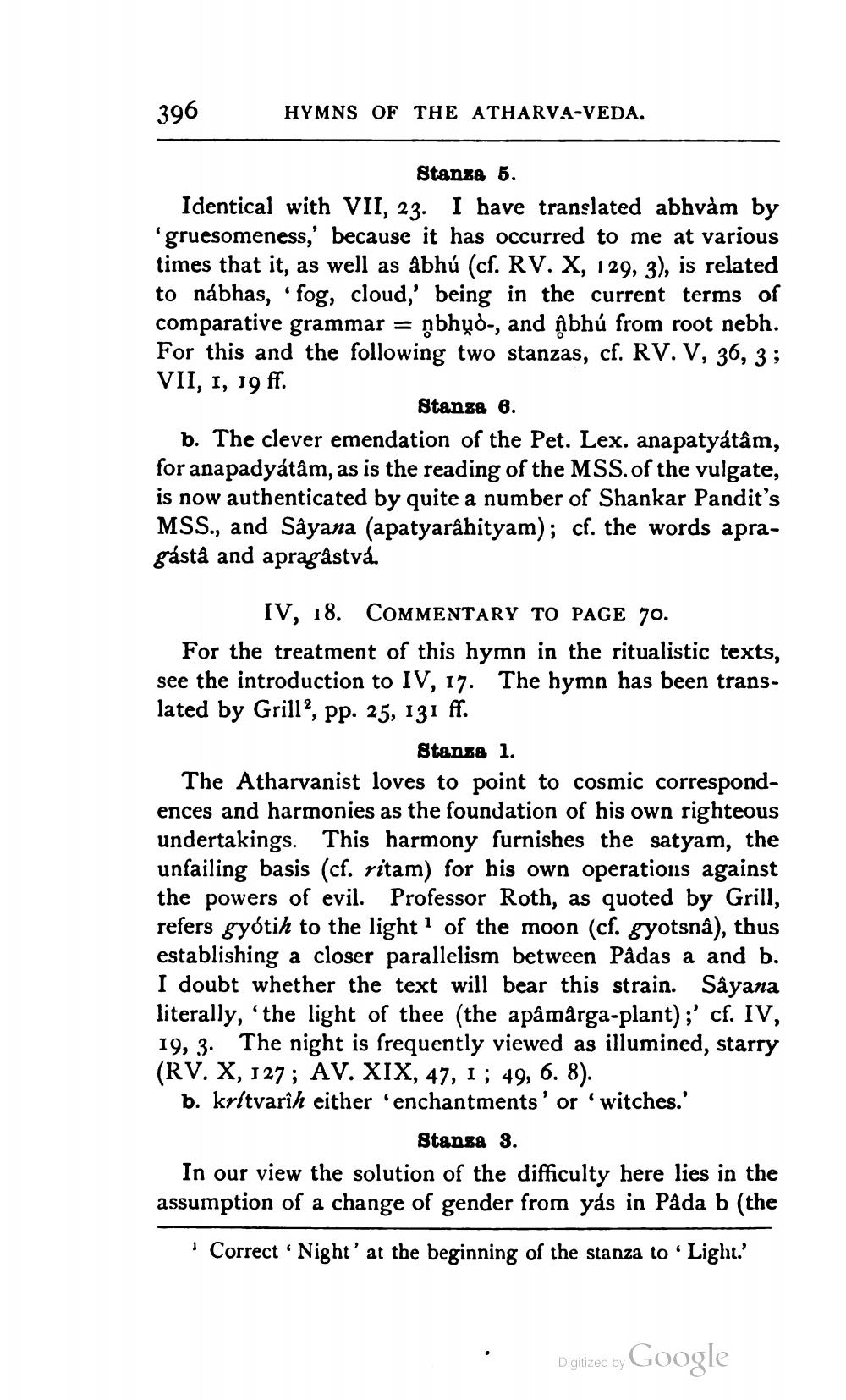________________
396
HYMNS OF THE ATHARVA-VEDA.
Stanza 5. Identical with VII, 23. I have translated abhvám by 'gruesomeness,' because it has occurred to me at various times that it, as well as abhú (cf. RV. X, 129, 3), is related to nábhas, fog, cloud,' being in the current terms of comparative grammar = ņbhụd-, and gbhú from root nebh. For this and the following two stanzas, cf. RV. V, 36, 3 ; VII, 1, 19 ff.
Stange 6. b. The clever emendation of the Pet. Lex. anapatyátâm, for anapadyátâm, as is the reading of the MSS. of the vulgate, is now authenticated by quite a number of Shankar Pandit's MSS., and Sâyana (apatyarâhityam); cf. the words apragástå and apragåstvá.
IV, 18. COMMENTARY TO PAGE 70. For the treatment of this hymn in the ritualistic texts, see the introduction to IV, 17. The hymn has been translated by Grill?, pp. 25, 131 ff.
Stanza 1. The Atharvanist loves to point to cosmic correspondences and harmonies as the foundation of his own righteous undertakings. This harmony furnishes the satyam, the unfailing basis (cf. ritam) for his own operations against the powers of evil. Professor Roth, as quoted by Grill, refers gyótih to the light of the moon (cf. gyotsna), thus establishing a closer parallelism between Padas a and b. I doubt whether the text will bear this strain. Sayana literally, the light of thee (the apâmarga-plant);' cf. IV, 19, 3. The night is frequently viewed as illumined, starry (RV. X, 127; AV. XIX, 47, 1; 49, 6. 8). b. krltvarîh either 'enchantments' or 'witches.'
Stansa 3. In our view the solution of the difficulty here lies in the assumption of a change of gender from yás in Påda b (the
CorrectNight' at the beginning of the stanza to · Light.'
Digitized by
Digitized by Google




